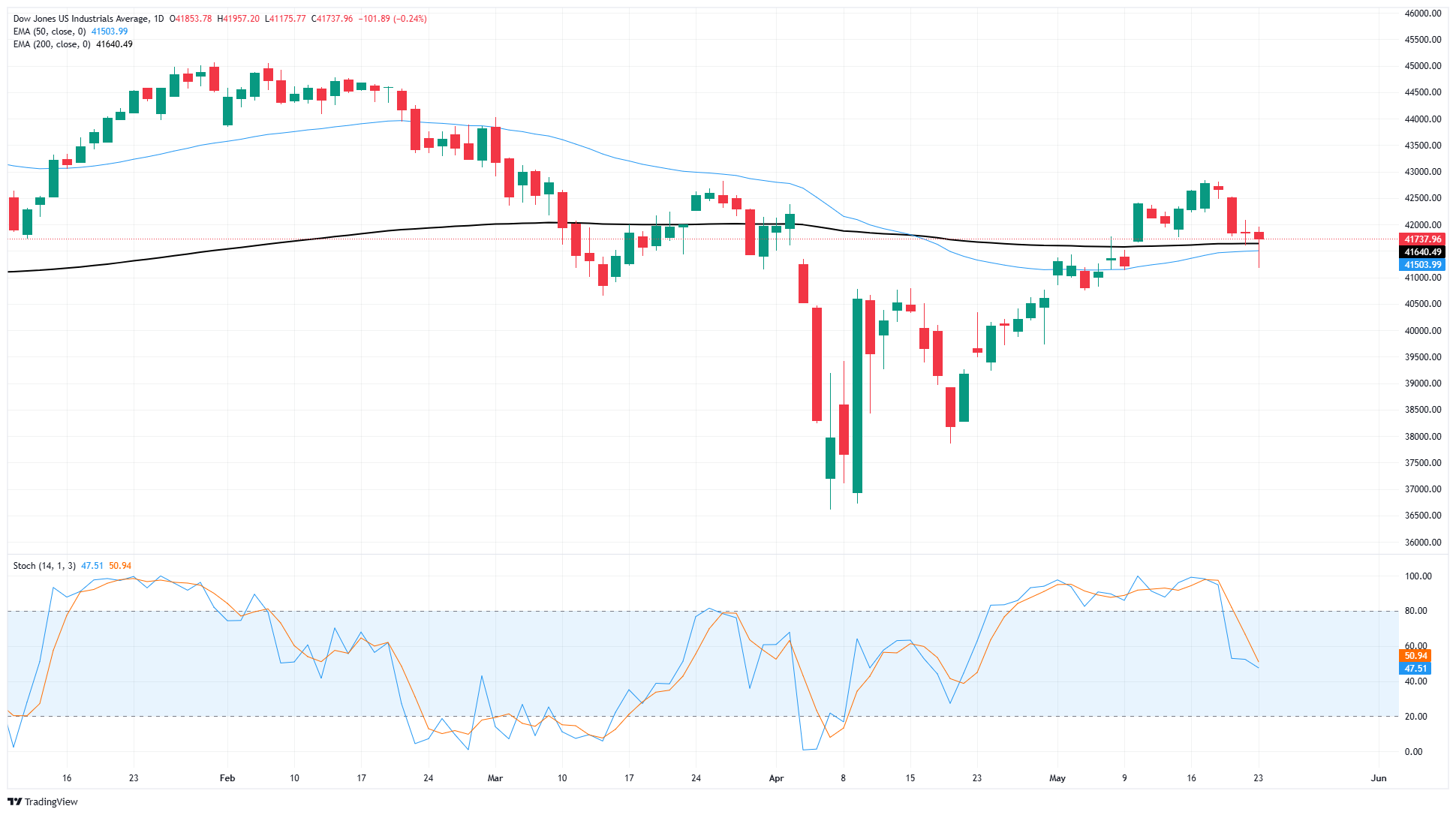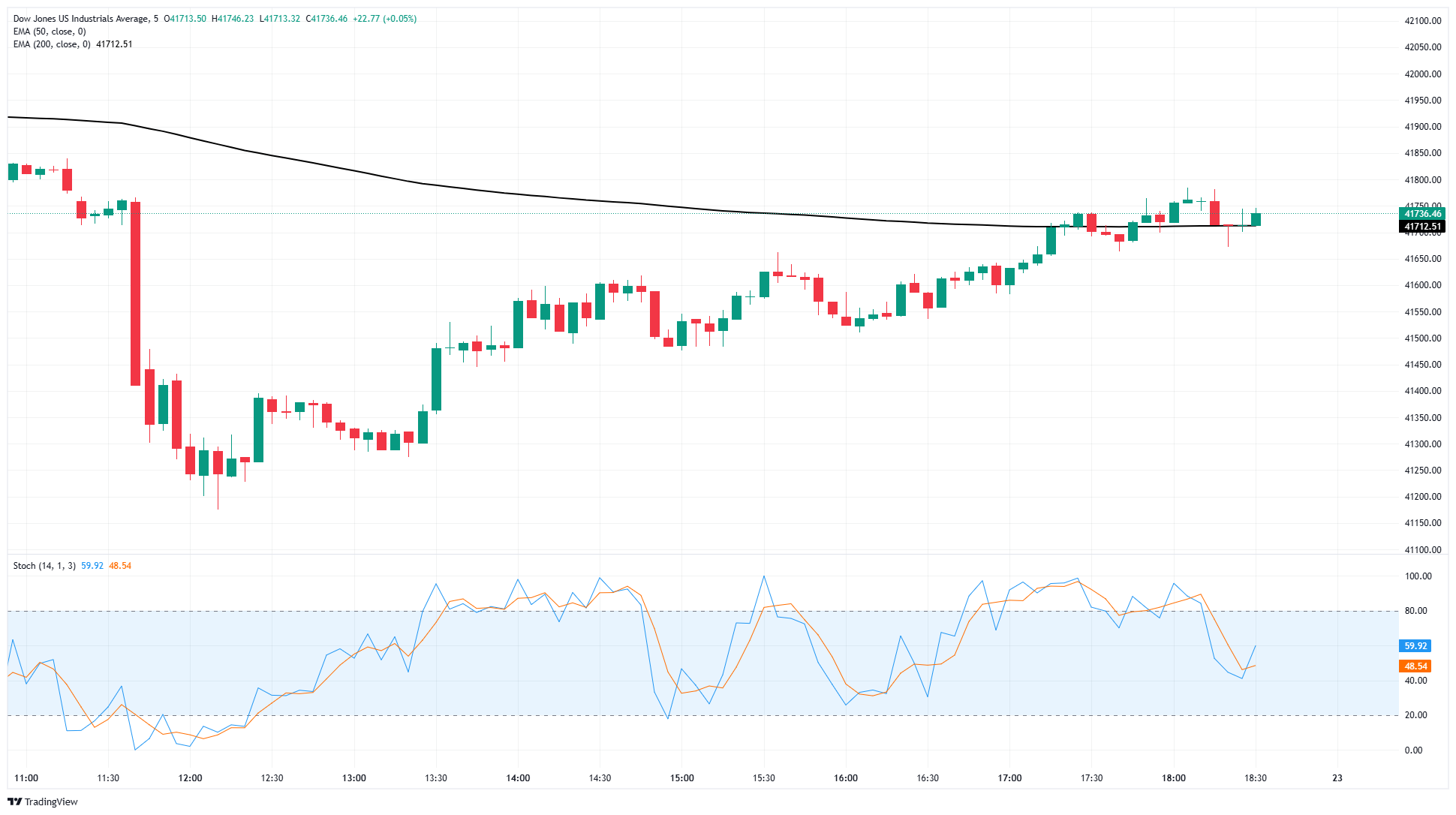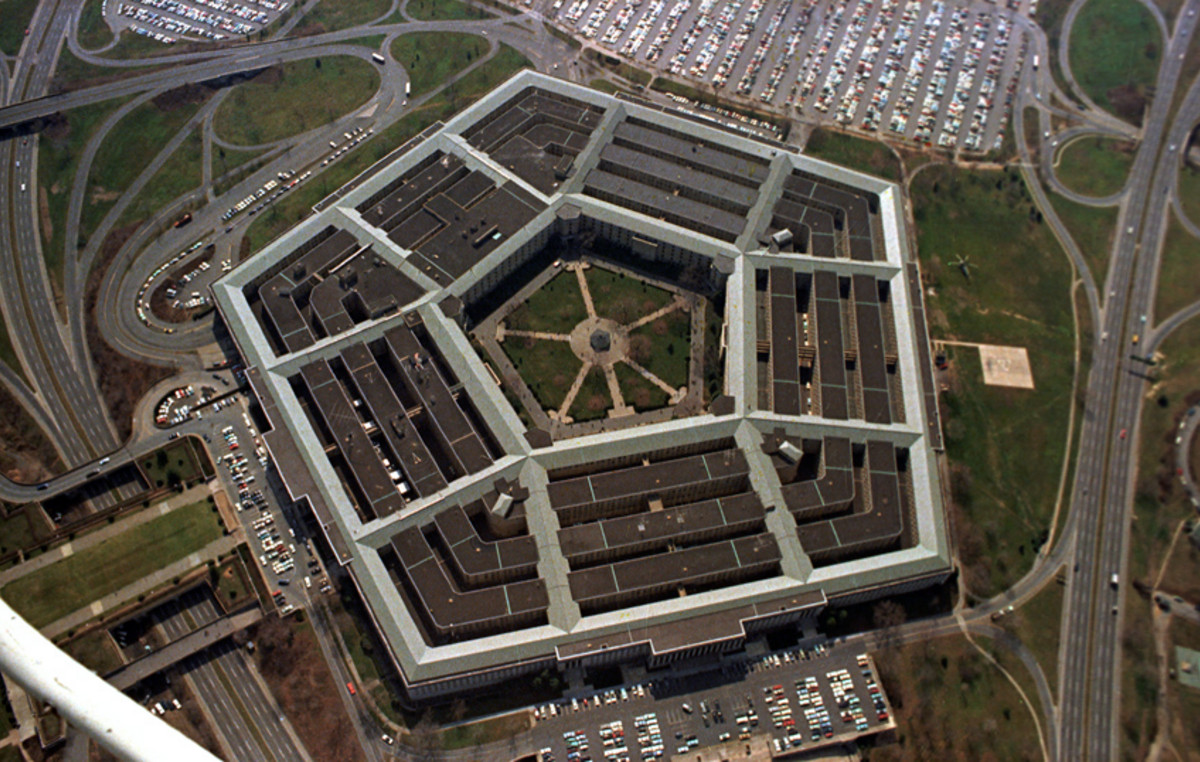- The Dow Jones fell on Friday, losing 780 points at its lowest point.
- The relief of tariff threats is over, since the commercial policy cycle begins again.
- The markets reduced the downward bets after investors remember that the chances of a tariff setback remain high.
The Dow Jones industrial average (DJIA) experienced strong losses during the Friday market session. The main stock market index fell 780 points from top to bottom and touched 41,200 before a slow return to the 41,750 region. The president of the United States (USA), Donald Trump, sent the downward markets after announcing their intention, or at least desire, to impose import taxes on a specific company, the first time the president has pointed to a single commercial entity for tariffs. Donald Trump continued with a new threat of tariffs to European commercial partners after their previous round of tariff threats against Europe produced few results.
Trump went out to the attack on Friday, declaring his belief that Apple (AAPL) products should be subject to a 25% tax, and also stating that commercial conversations with the European Union (EU) “are not going anywhere”, and ‘recommended’ through a proclamation in social networks that US should impose a 50% general tariff on all European products from June 1. The White House was quick to follow the publication on social networks of President Trump, stating that the president’s direct statements are not necessarily a declaration of the official intention or policy of the Government.
Tariff threats and commercial ambiguity return to the menu
Political uncertainty, rather than tariff threats itself, is probably the thorn on the side of investors on Friday. As Paul Donovan, chief economist of UBS Global Wealth Management:
“Given the number of times Trump has retracted this type of threats, the markets are likely to give only a limited weight to this position; but it is a reminder of the political uncertainty that persists in the United States at this time.”
Paul Donovan added that the most recent tariff suspension of the Trump administration was only a temporary solution of 90 days, and even the threat of a return to high import rates could shake the confidence of investors once again. The “US reciprocal tariff package” which was announced on April 2 is scheduled to re -entered into force on July 1, unless commercial agreements are completed with key countries before that date, a feat of diplomacy that Trump administration officials seem unable or little willing to achieve.
Next week it will be a shorter negotiation week with a holiday in the US on Monday. However, a scheduled speech by the president of the Federal Reserve (FED), Jerome Powell, on Sunday could establish the tone for the first half of the agenda of the week before the minutes of the last meeting of Fed fees are published on Wednesday.
Read more news about actions: Apple’s actions sink after Trump threatens more tariffs
Dow Jones price forecast
Friday’s recent bullish drop has pushed the Dow Jones industrial average again to the 200 -day exponential (EMA) mobile average, since the recovery after the suspension of tariffs seems to be about to finish. The Dow Jones is in red numbers not only on Friday, but also in the week and in the year, falling around 2% from the January opening offers.
Dow Jones daily graphics

Five -minute graph of Dow Jones

Dow Jones Faqs
The Dow Jones Industrial Avenge, one of the oldest stock market indexes in the world, consists of the 30 most negotiated values in the United States. The index is weighted by the price instead of capitalization. It is calculated by adding the prices of the values that compose it and dividing them by a factor, currently 0.152. The index was founded by Charles Dow, also founder of the Wall Street Journal. In recent years it has been criticized for not being sufficiently representative, since it only follows 30 companies, unlike broader rates such as S&P 500.
There are many factors that promote the Dow Jones Industrial Average (DJIA) index. The main one is the added performance of the companies that compose it, revealed in the quarterly reports of business benefits. The American and world macroeconomic data also contribute, since they influence investor confidence. The level of interest rates, set by the Federal Reserve (FED), also influences the DJia, since it affects the cost of credit, on which many companies depend largely. Therefore, inflation can be a determining factor, as well as other parameters that influence the decisions of the Federal Reserve.
Dow’s theory is a method to identify the main trend of the stock market developed by Charles Dow. A key step is to compare the direction of the Dow Jones Industrial Avenge (DJIA) and the Dow Jones Transportation Average (DJTA) and just follow the trends in which both move in the same direction. The volume is a confirmation criterion. The theory uses elements of maximum and minimum analysis. Dow’s theory raises three phases of the trend: accumulation, when intelligent money begins to buy or sell; Public participation, when the general public joins the trend; and distribution, when intelligent money abandons the trend.
There are several ways to operate with the DJ. One of them is to use ETF that allow investors to negotiate the DJ as a single value, instead of having to buy shares of the 30 companies that compose it. An outstanding example is the SPDR Dow Jones Industrial Avenge ETF (day). Future contracts on the DJ allow the specular operators about the future value of the index and the options provide the right, but not the obligation, to buy or sell the index at a predetermined price in the future. Investment funds allow investors to buy a part of a diversified portfolio of DJ values, which provides exposure to global index.
Source: Fx Street
I am Joshua Winder, a senior-level journalist and editor at World Stock Market. I specialize in covering news related to the stock market and economic trends. With more than 8 years of experience in this field, I have become an expert in financial reporting.





